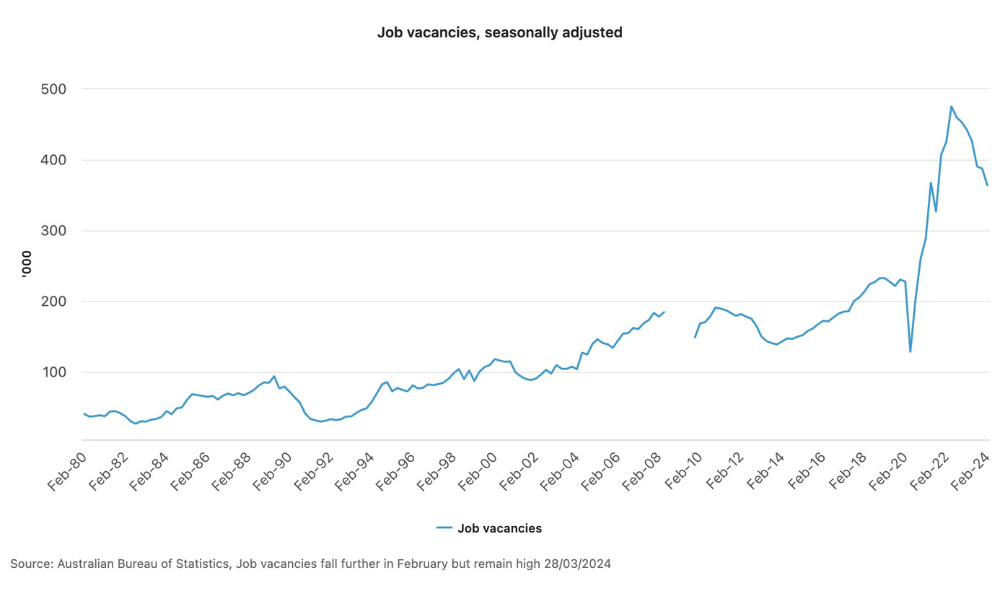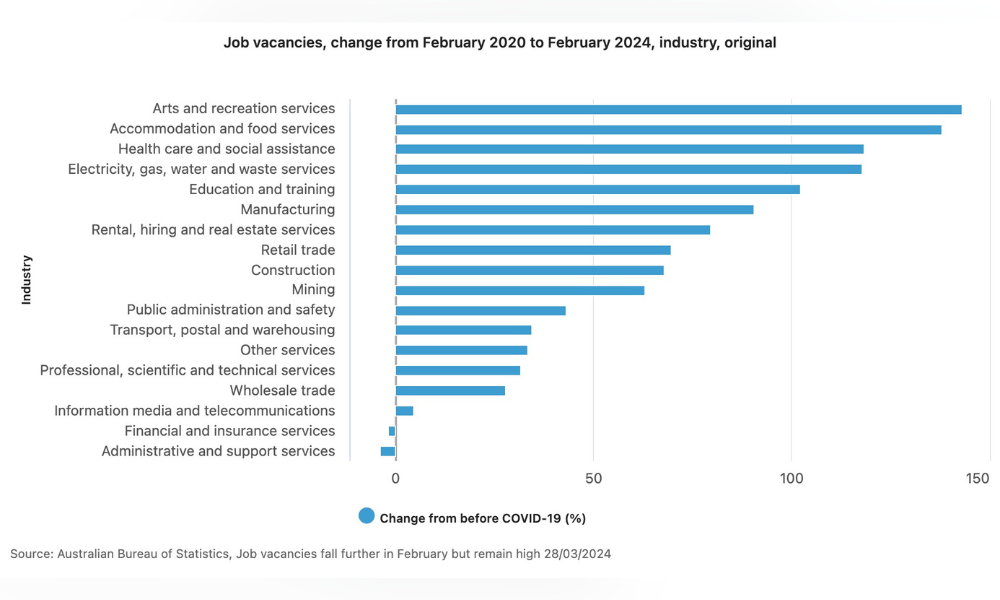
Number of job vacancies logs seventh quarterly drop in a row

Job vacancies in Australia dropped by 6.1% between November 2023 and February 2024, according to data from the Australian Bureau of Statistics (ABS).
There were 364,000 job vacancies recorded in February 2024, down 24,000 from November.
"The drop in February followed a small fall of 0.8% in November 2023 and was the seventh quarterly drop in a row," said Bjorn Jarvis, ABS head of labour statistics, in a statement.
"Job vacancies are now 23.5% lower than they were at their peak in May 2022. However, they remain well above the pre-COVID-19 pandemic level and are still 59.8% higher than February 2020, or around 136,000 more vacancies."
The most-cited reason for vacancies is replacement or resignation (82.8%), followed by increased workload (39.2%), and then expansion of business (26.2%), according to the ABS data.

By state, Queensland saw the biggest drop in job vacancies with -11.1%, while South Australia saw the highest increase with eight per cent.
By sector, the ABS said both the public (-3,000) and private (-21,00) sectors registered a 6.1% drop.
By industry, the arts and recreation services saw the strongest drop with -33.2%, followed by the public administration and safety with -20.2%.
Higher job vacancies, on the other hand, were reported in sectors such as Rental, hiring, and real estate (20.7%) and Financial and insurance services (17.9%).
Compared to pre-pandemic levels, the ABS said job vacancies in many industries remained higher, particularly in the arts and recreation services sector.

Commenting on the data, the Institute of Public Affairs (IPA) renewed its call to reduce red tape to give employers a wider talent pool to choose from amid high number of job vacancies.
"The ongoing high number of job vacancies in Australia underscores the immediate need to once-and-for-all lower exorbitant tax rates on Australians who want to work if we want to see numbers return to pre-pandemic levels," said Saxon Davidson, research fellow at IPA, in a statement.
According to Davidson, tax and red tape barriers prevent pensioners, veterans, and students on the Youth Allowance from joining the workforce.
Davidson stressed that if Australia applied New Zealand's pension tax model, there could be up to 520,000 more Australians participating in the labour force.
"New Zealand's pension tax model is the major reason why its job vacancy levels are only five per cent above what it was pre-pandemic," he said.